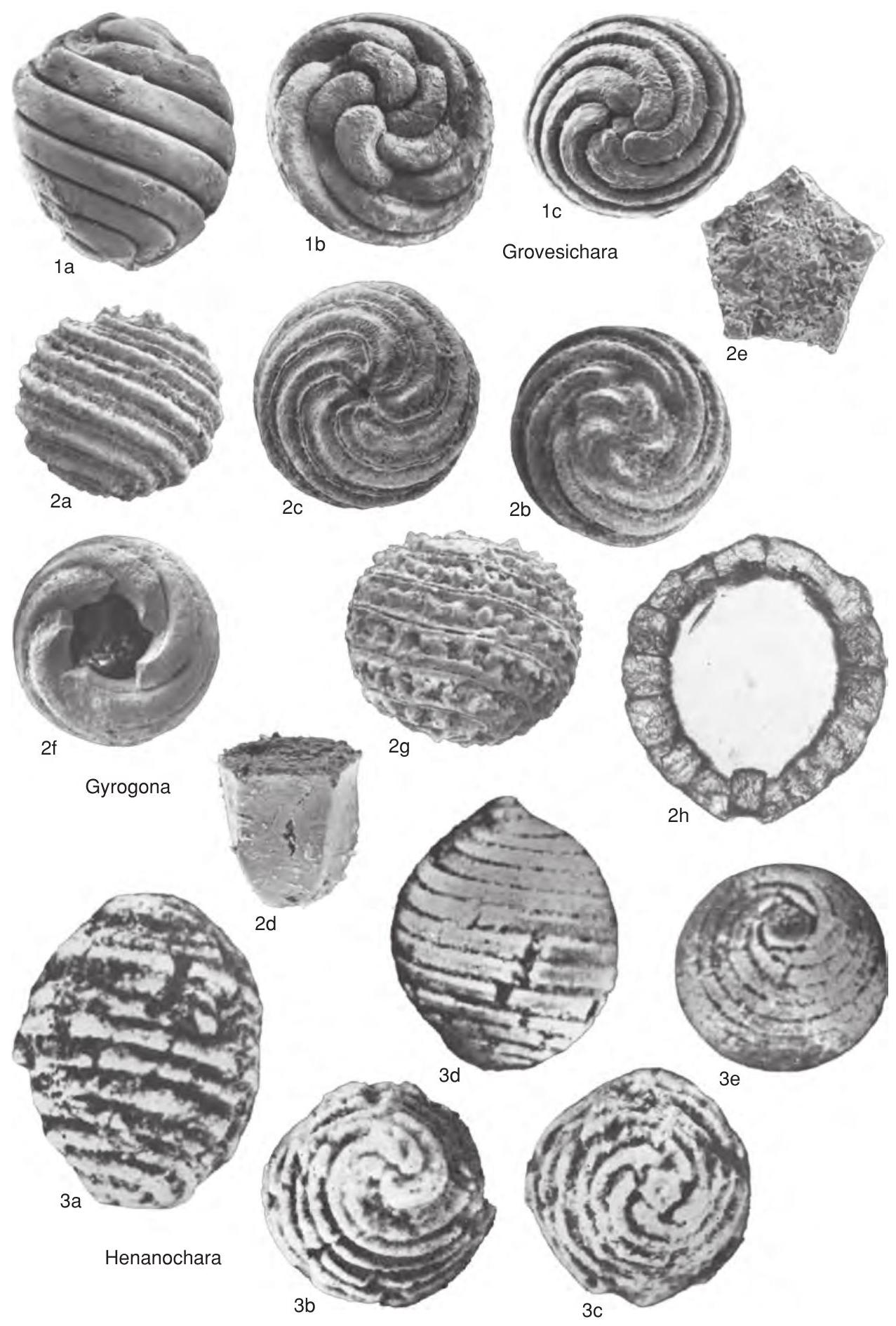Welcome to the Treatise on Invertebrate Paleontology!
Please enter a genera name to retrieve more information.

Grovesichara
Classification
Phylum:
Charophyta
Class:
Charophyceae
Order:
Charales
Suborder:
Charineae
Family:
Characeae
Subfamily:
Charoideae
Formal Genus Name and Reference:
Grovesichara Horn af RANTZIEN, 1959b, p. 123
Type Species:
Chara distorta Reid & GROVES, 1921, p. 186, pl. V, 6, OD
Images
(Click to enlarge in a new window)
Fig. 66, 1a-c. * G. distorta (Reid & Groves) Horn af Rantzien, upper Eocene, United Kingdom, a, lateral view (FeistCastel, 1977a, pl. 21,7), b, apical view, CF.1579-3, c, basal view, CF.1579-2, x30 (new).
Synonyms
Geographic Distribution
Austria, France, United Kingdom, Spain, China, Mongolia
Age Range
Beginning Stage in Treatise Usage:
Upper Cretaceous
Beginning International Stage:
Cenomanian
Fraction Up In Beginning Stage:
0
Beginning Date:
100.5
Ending Stage in Treatise Usage:
Neogene (Miocene)
Ending International Stage:
Messinian
Fraction Up In Ending Stage:
100
Ending Date:
5.34
Description
Apex lamprothamnoid, spirals become thinner as they pass onto summit, then thicken again, ascending to center of apex. General shape irregular, oblate-spheroidal to subprolate, apex rounded, strongly prominent. Base rounded, in some species tapering. Basal plate strongly calcified, thickness being more than half of width, lower face of plate visible from exterior. Size medium to large. [Genus differs from Gyrogona in having less marked periapical modification as well as having the basal plate visible from the exterior and general shape more elongated.]
References
Museum or Author Information
Classification
Phylum:
Charophyta
Class:
Charophyceae
Order:
Charales
Suborder:
Charineae
Family:
Characeae
Subfamily:
Charoideae
Formal Genus Name and Reference:
Grovesichara Horn af RANTZIEN, 1959b, p. 123
Type Species:
Chara distorta Reid & GROVES, 1921, p. 186, pl. V, 6, OD
Images
(Click to enlarge in a new window)
Fig. 66, 1a-c. * G. distorta (Reid & Groves) Horn af Rantzien, upper Eocene, United Kingdom, a, lateral view (FeistCastel, 1977a, pl. 21,7), b, apical view, CF.1579-3, c, basal view, CF.1579-2, x30 (new).
Synonyms
Geographic Distribution
Austria, France, United Kingdom, Spain, China, Mongolia
Age Range
Beginning Stage in Treatise Usage:
Upper Cretaceous
Beginning International Stage:
Cenomanian
Fraction Up In Beginning Stage:
0
Beginning Date:
100.5
Ending Stage in Treatise Usage:
Neogene (Miocene)
Ending International Stage:
Messinian
Fraction Up In Ending Stage:
100
Ending Date:
5.34
Description
Apex lamprothamnoid, spirals become thinner as they pass onto summit, then thicken again, ascending to center of apex. General shape irregular, oblate-spheroidal to subprolate, apex rounded, strongly prominent. Base rounded, in some species tapering. Basal plate strongly calcified, thickness being more than half of width, lower face of plate visible from exterior. Size medium to large. [Genus differs from Gyrogona in having less marked periapical modification as well as having the basal plate visible from the exterior and general shape more elongated.]
